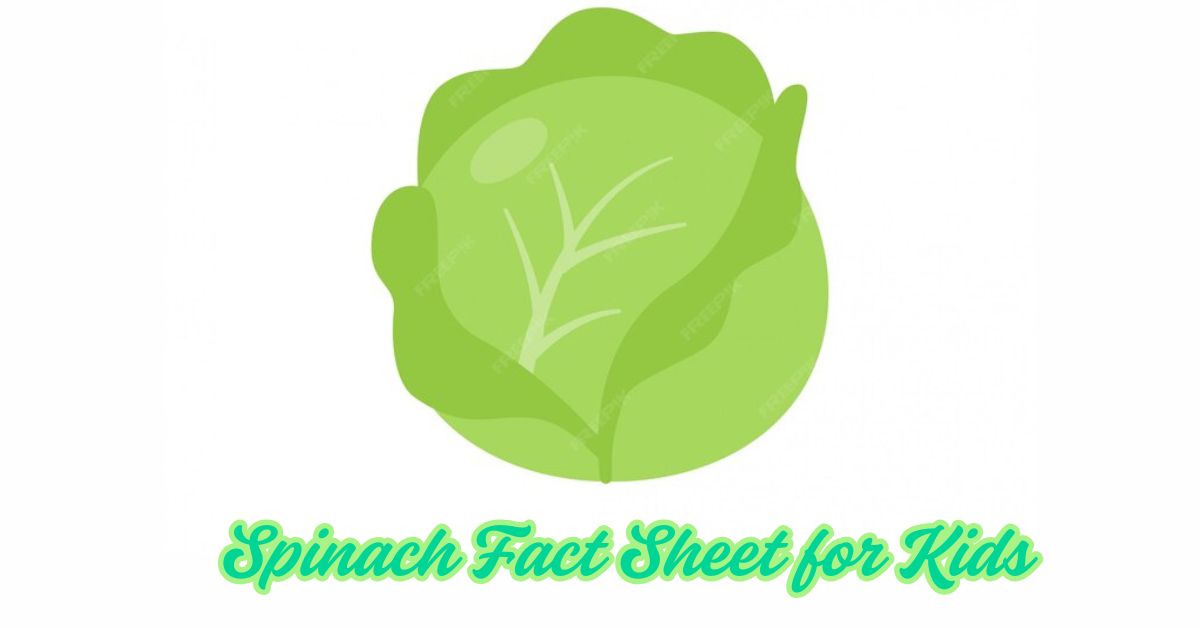Spinach isn’t just Popeye’s favorite superfood—it’s a powerhouse of nutrients that kids (and adults!) need to grow strong and healthy. But how do you make spinach exciting for kids? This spinach fact sheet for kids is here to help! Packed with fun facts, health benefits, and easy recipes, this guide will turn even the pickiest eaters into spinach lovers.
Why Spinach is a Superfood for Kids
Spinach is one of the most nutrient-dense foods on the planet. It’s loaded with vitamins, minerals, and antioxidants that support kids’ growth, brain development, and immune systems. Here’s why spinach deserves a spot on your child’s plate:
- Rich in Iron: Helps prevent anemia and keeps energy levels high.
- Packed with Vitamin A: Supports healthy vision and skin.
- High in Vitamin C: Boosts immunity and helps absorb iron.
- Full of Calcium: Strengthens bones and teeth.
- Loaded with Fiber: Promotes healthy digestion.
Fun Spinach Facts for Kids
Let’s make learning about spinach fun! Share these fascinating facts with your kids to spark their curiosity:
- Ancient Origins: Spinach was first grown in Persia (modern-day Iran) over 2,000 years ago!
- Popeye’s Power: Popeye the Sailor made spinach famous in the 1930s by eating it to gain super strength.
- Space Veggie: Spinach has been grown in space! NASA studied its growth to understand how plants thrive in zero gravity.
- Colorful Varieties: Spinach isn’t just green—it comes in red, purple, and even yellow varieties!
- Quick Grower: Spinach can grow from seed to harvest in just 4-6 weeks.
Health Benefits of Spinach for Kids
Spinach isn’t just nutritious—it’s a game-changer for kids’ health. Here’s how it helps:
1. Boosts Brain Power
Spinach is rich in folate and antioxidants, which support brain development and improve focus and memory.
2. Strengthens Bones
With high levels of calcium, magnesium, and vitamin K, spinach helps build strong bones and teeth.
3. Fights Off Colds
The vitamin C in spinach strengthens the immune system, helping kids stay healthy during cold and flu season.
4. Keeps Energy Levels High
Iron in spinach helps transport oxygen throughout the body, keeping kids active and energized.
How to Make Spinach Kid-Friendly
Getting kids to eat spinach can be tricky, but these tips make it easy:
- Blend It: Add spinach to smoothies for a nutrient boost without changing the flavor.
- Hide It: Mix finely chopped spinach into pasta sauces, soups, or casseroles.
- Make It Fun: Create spinach-based snacks like spinach muffins or spinach chips.
- Involve Them: Let kids help wash, chop, or cook spinach—they’re more likely to eat what they make!
Easy Spinach Recipes for Kids
Try these simple, kid-approved recipes to make spinach a family favorite:
1. Spinach Banana Smoothie
- 1 cup fresh spinach
- 1 banana
- 1/2 cup yogurt
- 1/2 cup milk
- 1 tsp honey
Blend all ingredients until smooth. Serve immediately for a refreshing treat!
2. Cheesy Spinach Quesadillas
- 1 cup chopped spinach
- 1/2 cup shredded cheese
- 2 whole-wheat tortillas
Layer spinach and cheese between tortillas. Cook in a skillet until cheese melts. Cut into wedges and serve with salsa.
3. Spinach Pancakes
- 1 cup pancake mix
- 1/2 cup pureed spinach
- 3/4 cup milk
- 1 egg
Mix ingredients and cook on a griddle. Serve with maple syrup or fruit.
Spinach Comparison Chart
| Nutrient | Spinach (1 cup raw) | Broccoli (1 cup raw) | Carrots (1 cup raw) |
|---|---|---|---|
| Vitamin A | 56% DV | 11% DV | 428% DV |
| Vitamin C | 14% DV | 135% DV | 13% DV |
| Iron | 5% DV | 4% DV | 2% DV |
| Calcium | 3% DV | 4% DV | 3% DV |
DV = Daily Value based on a 2,000-calorie diet.
FAQs
1. Can kids eat spinach every day?
Yes! Spinach is safe for daily consumption in moderate amounts. However, too much can lead to digestive discomfort due to its high fiber content.
2. Is raw or cooked spinach better for kids?
Both are great! Raw spinach retains more vitamin C, while cooked spinach provides more iron and calcium.
3. What if my child doesn’t like spinach?
Start small by adding spinach to foods they already enjoy, like smoothies or pasta. Over time, they’ll get used to the taste.
Conclusion: Spinach is a Win for Kids!
Spinach is more than just a leafy green—it’s a superfood that supports kids’ health in countless ways. With this spinach fact sheet for kids, you’ve got everything you need to make spinach exciting, delicious, and a regular part of your family’s diet.










